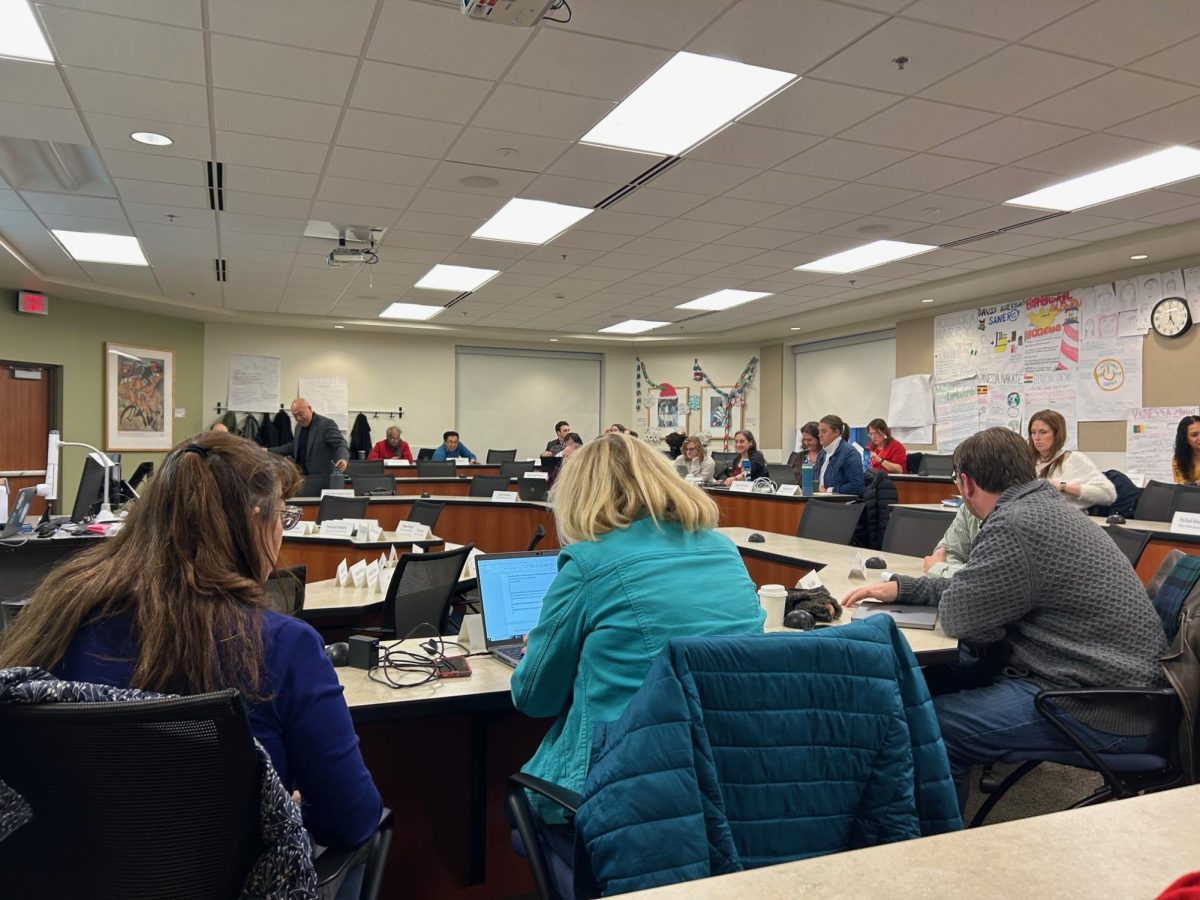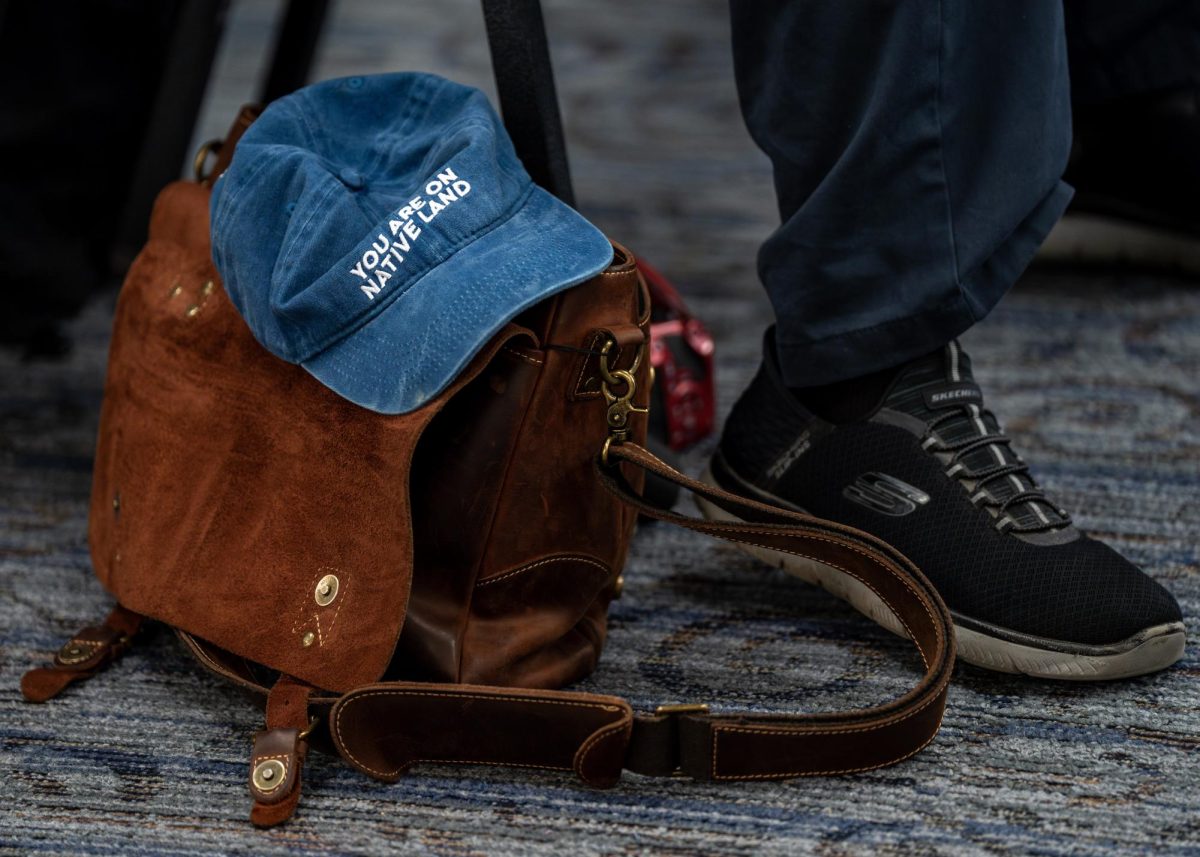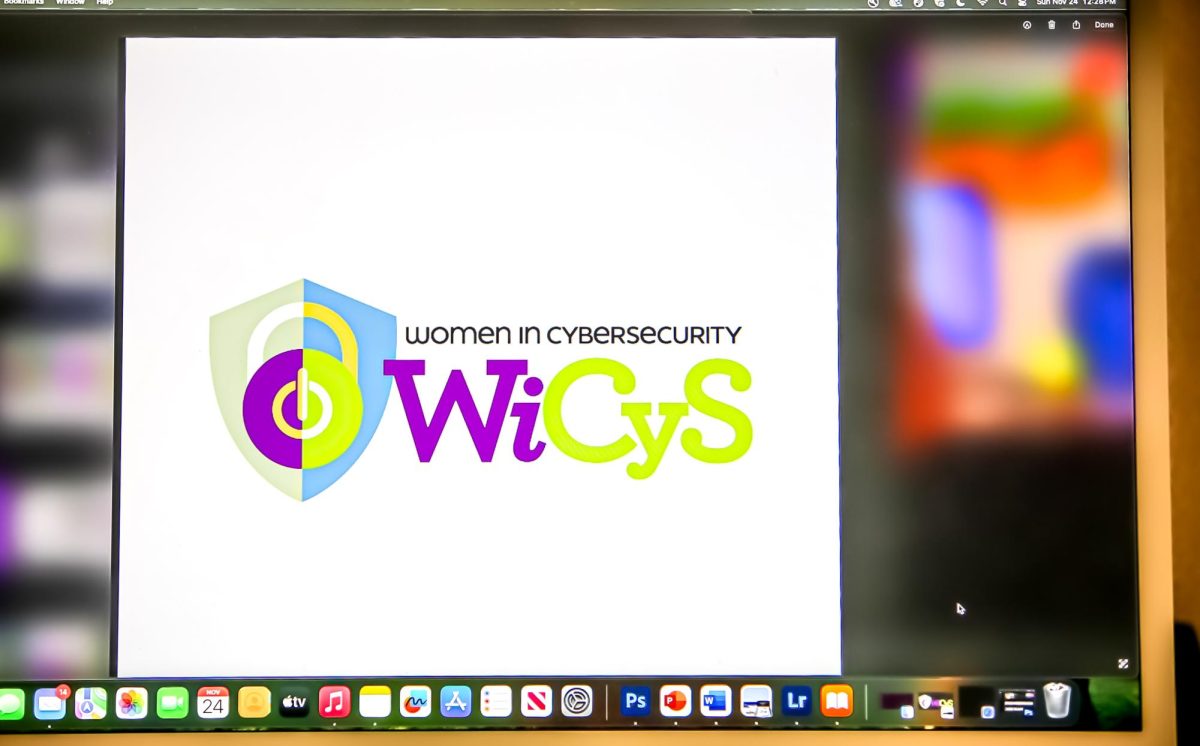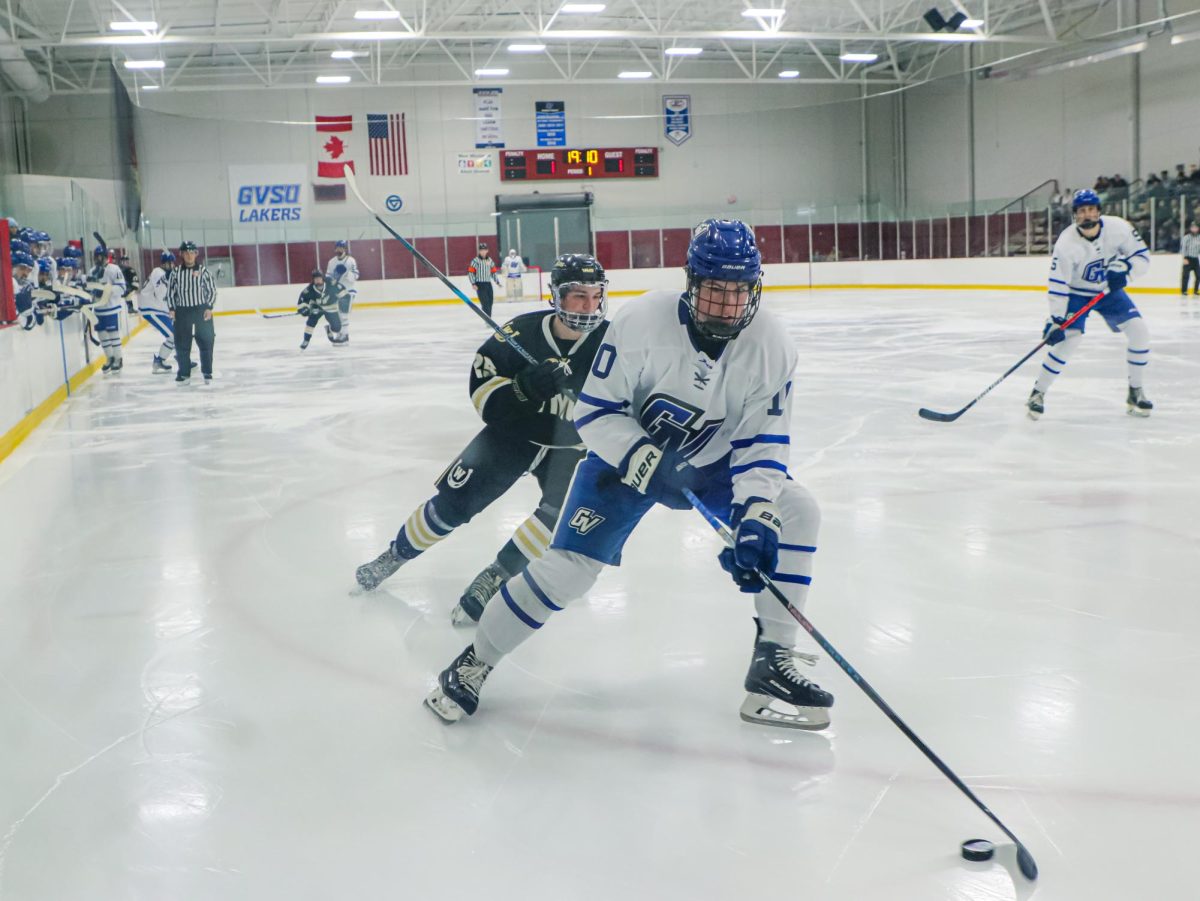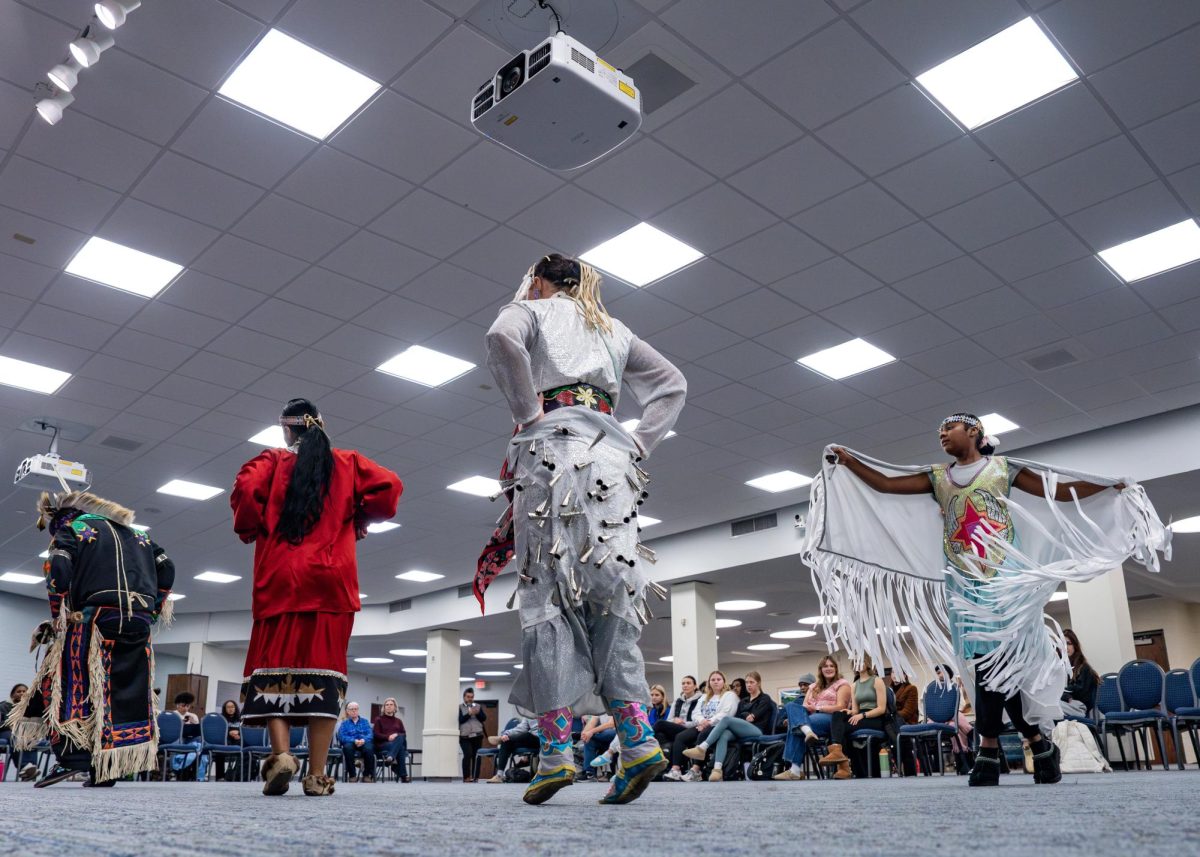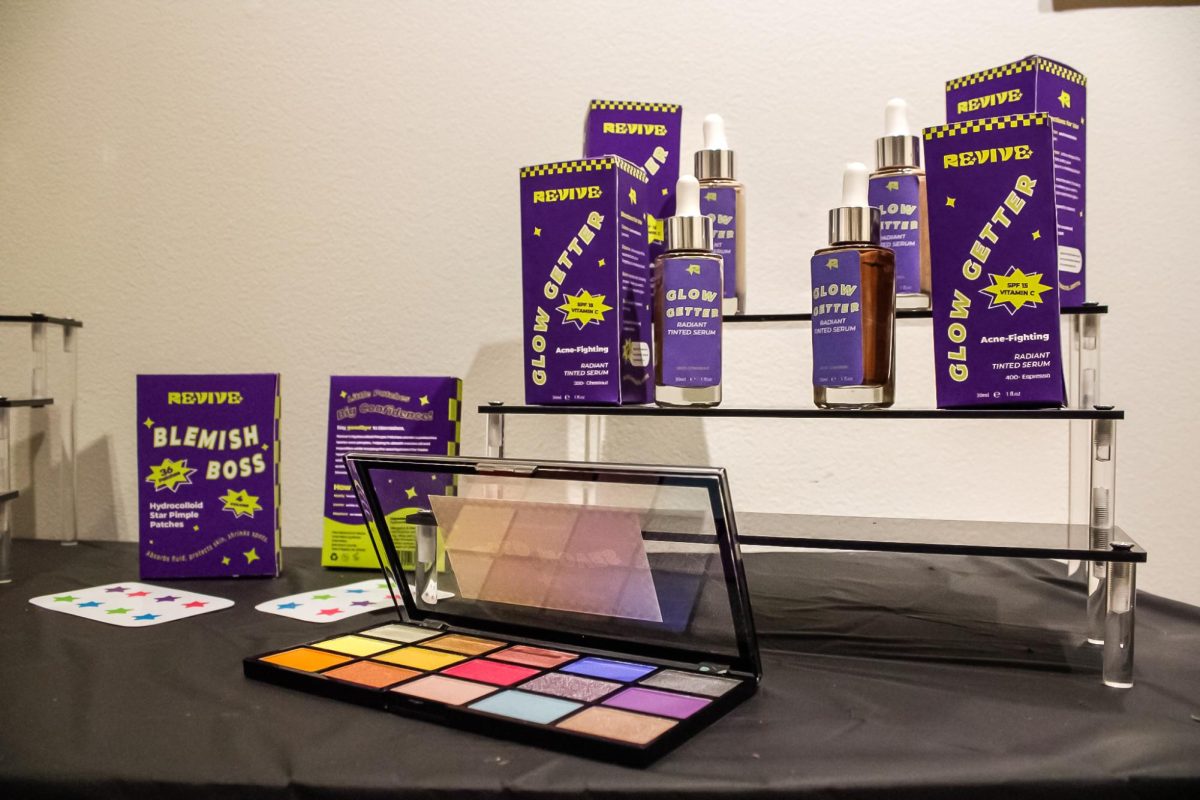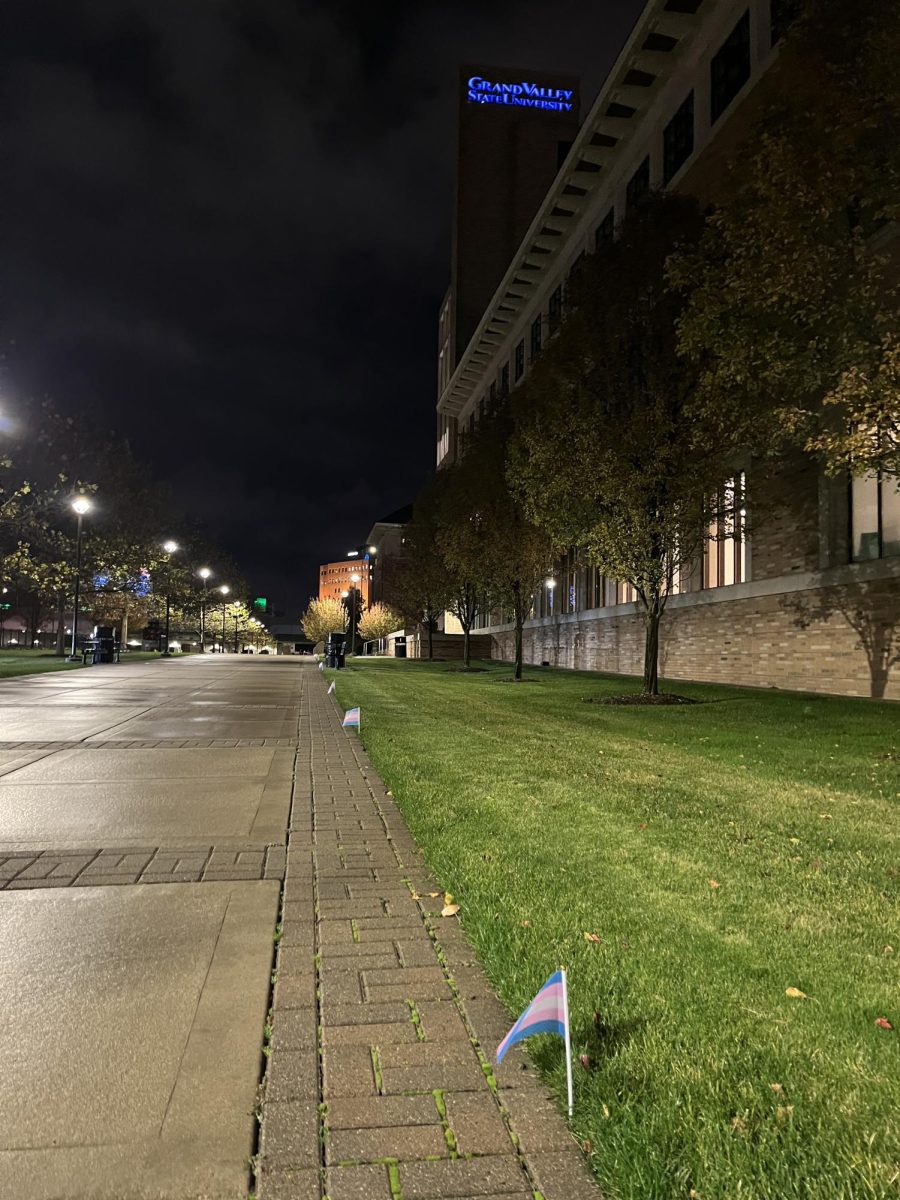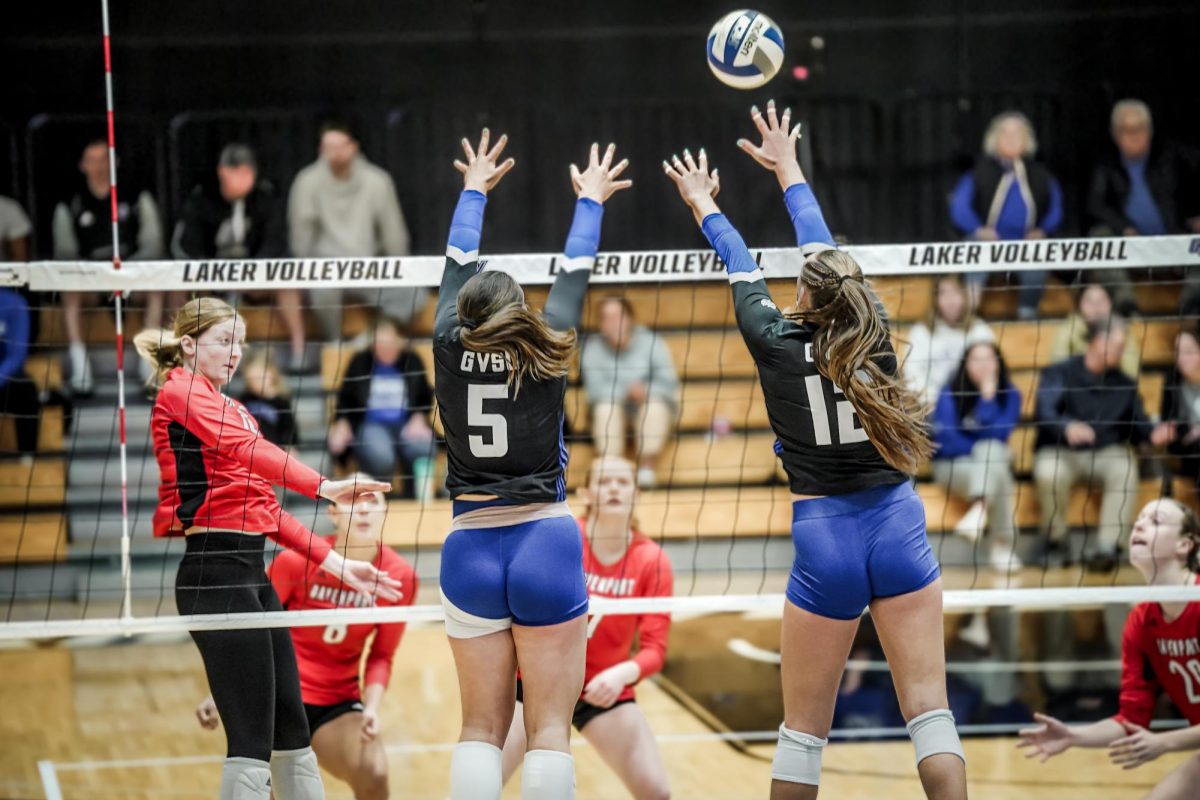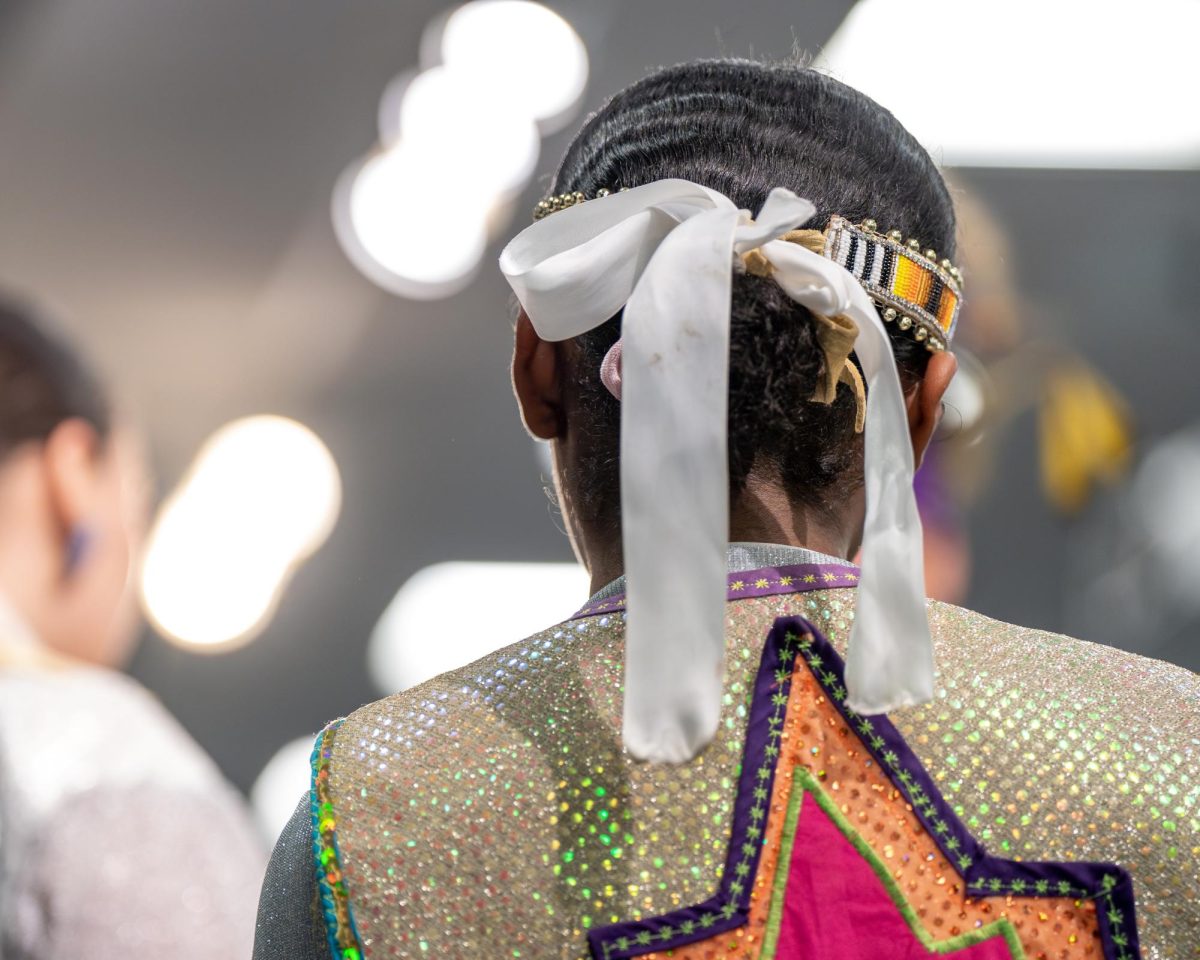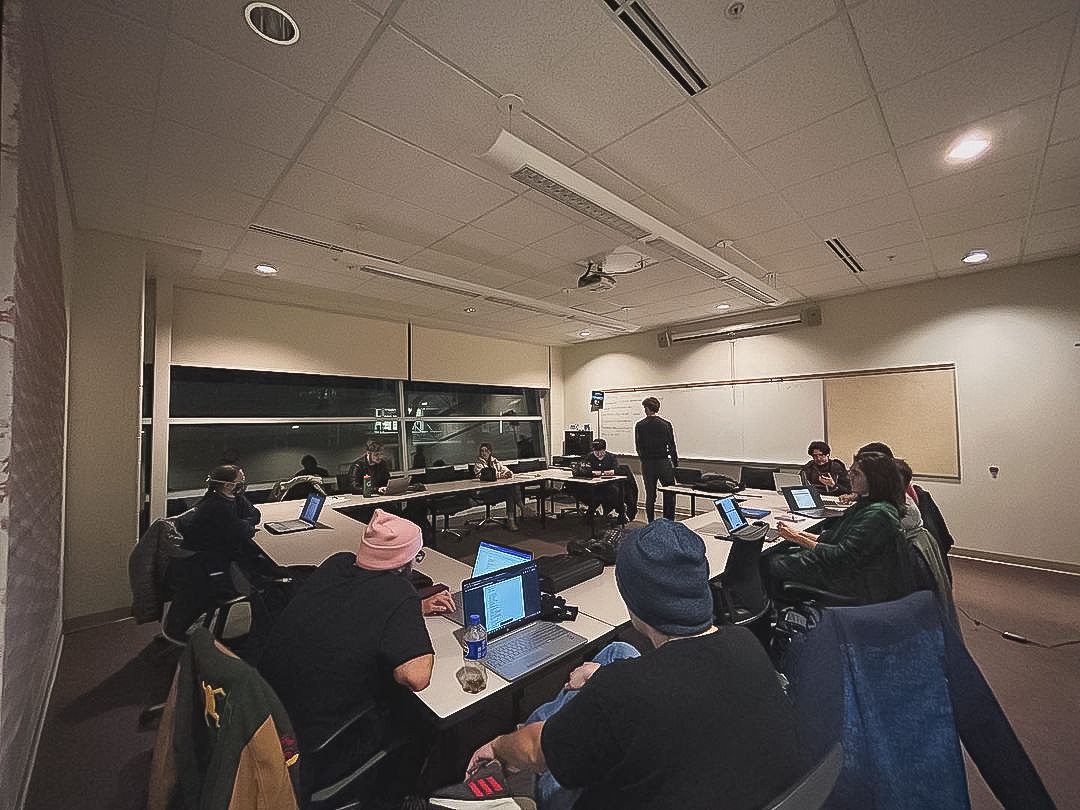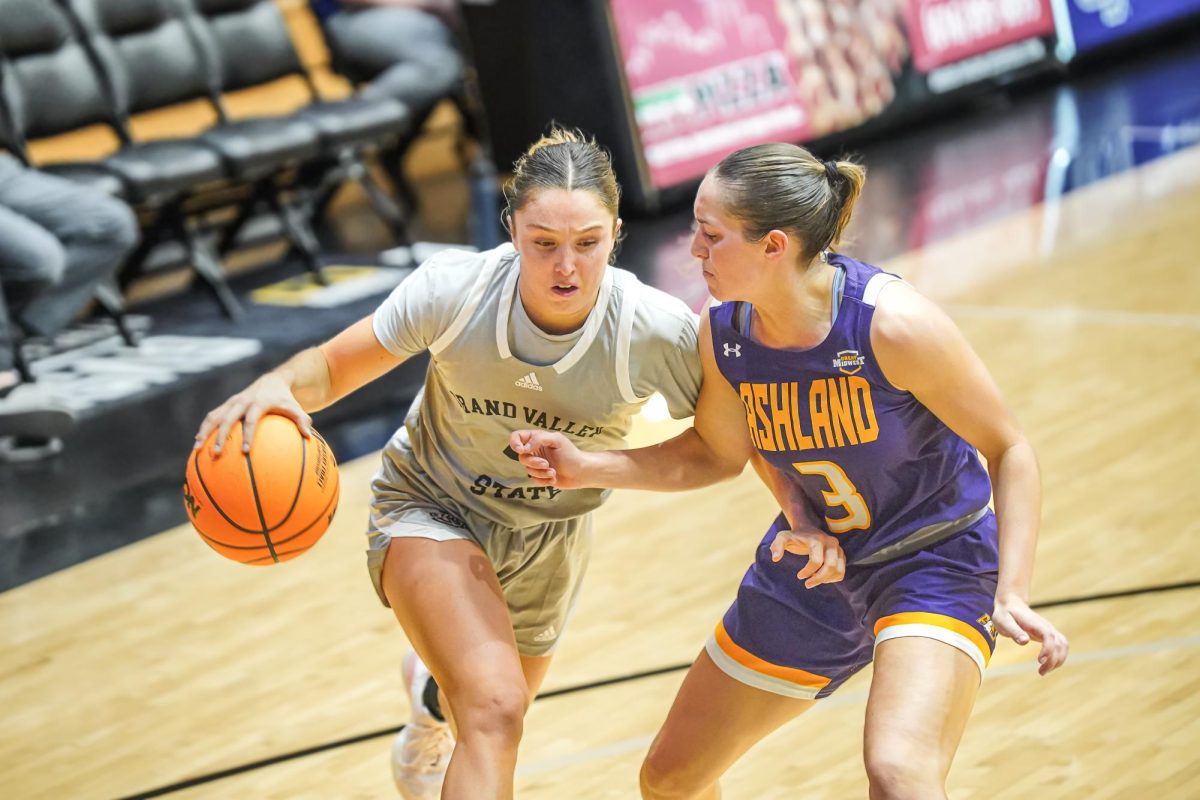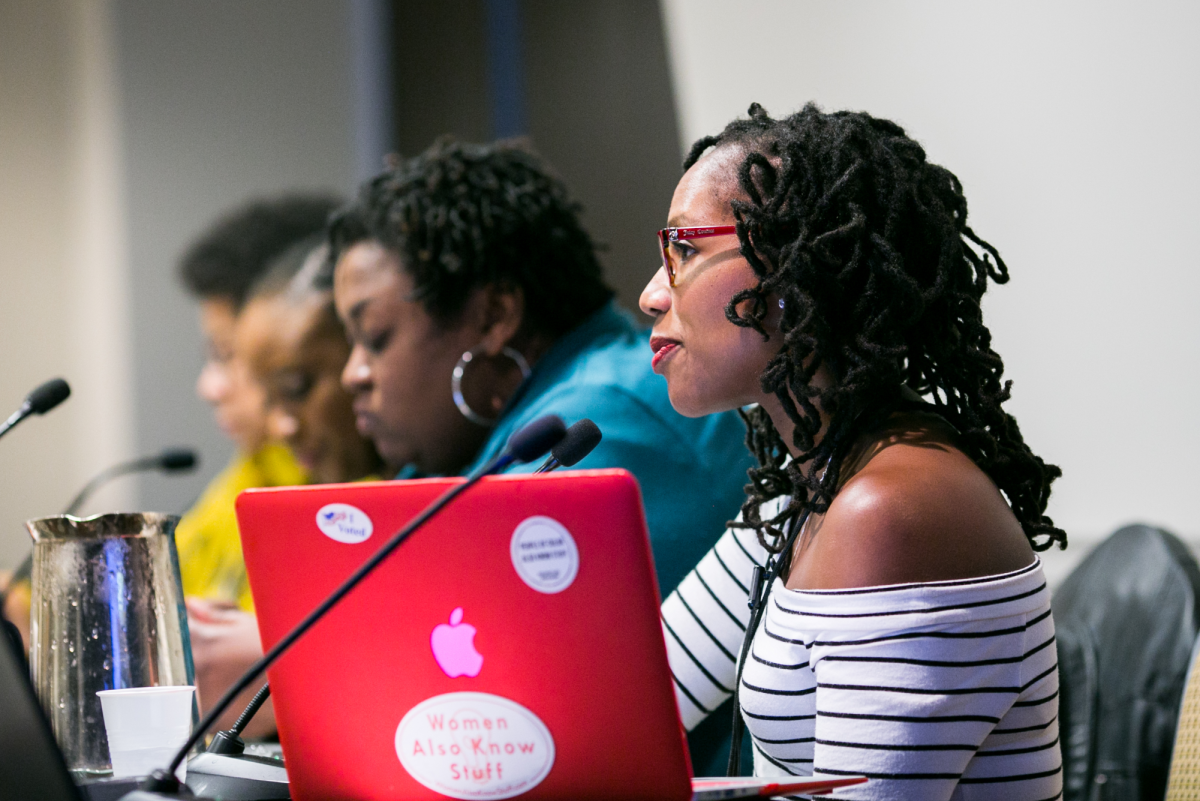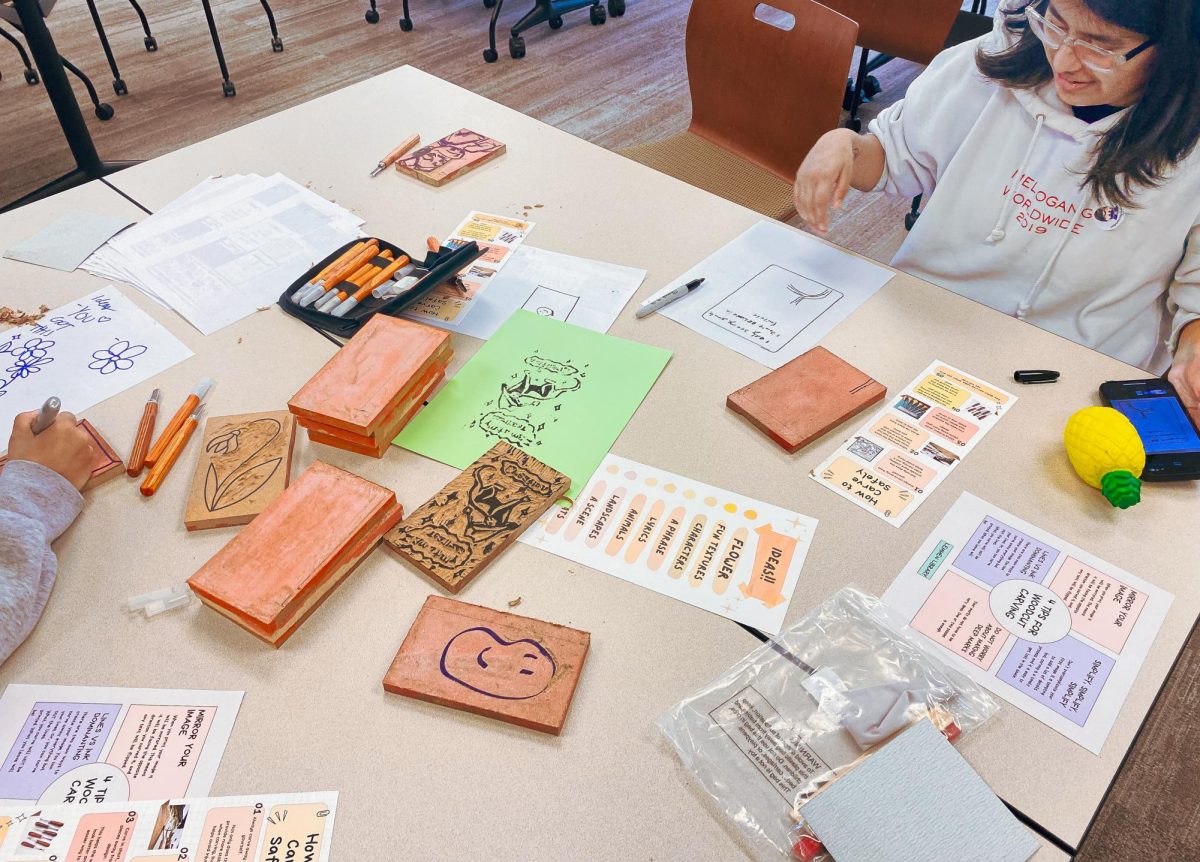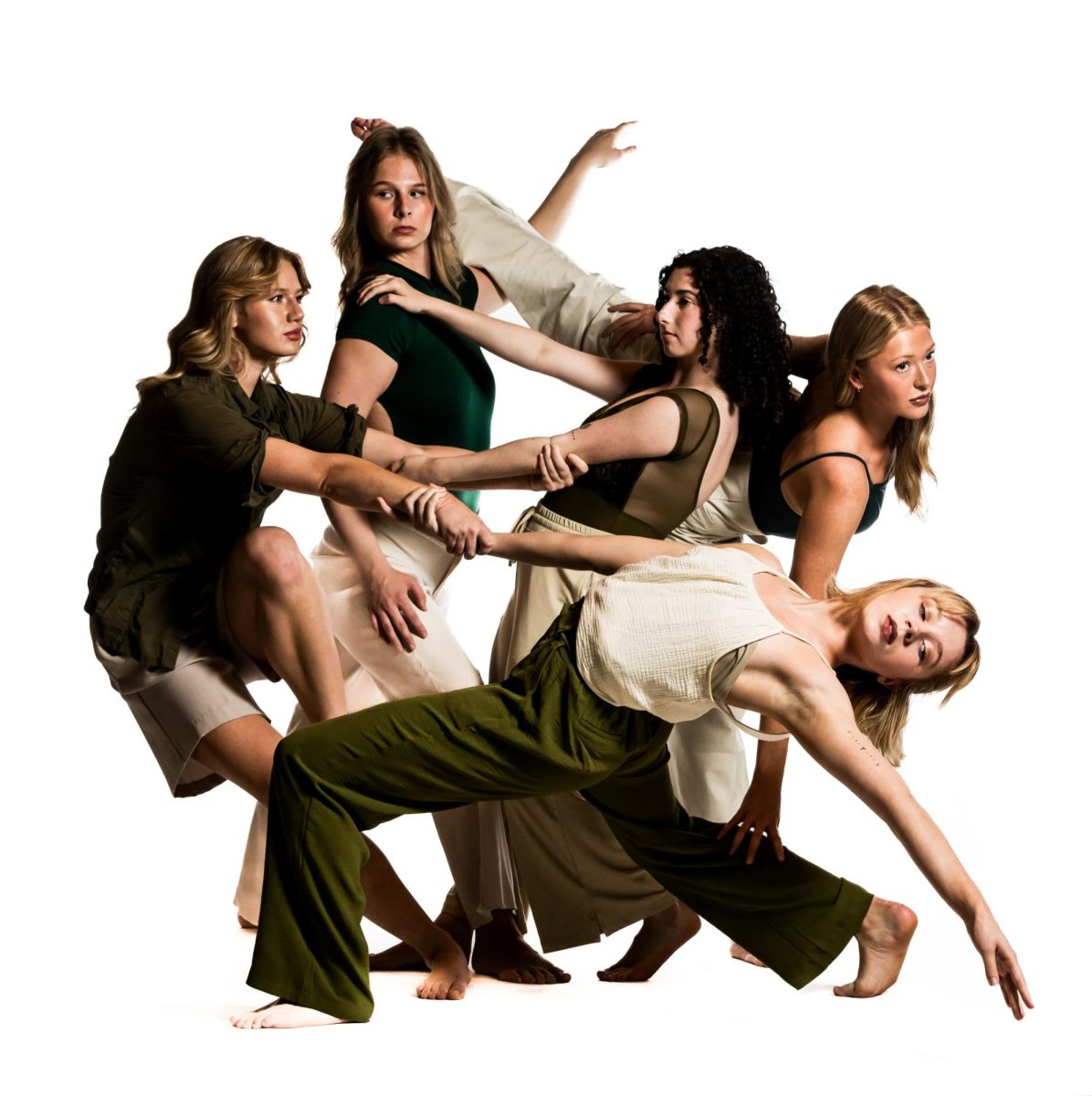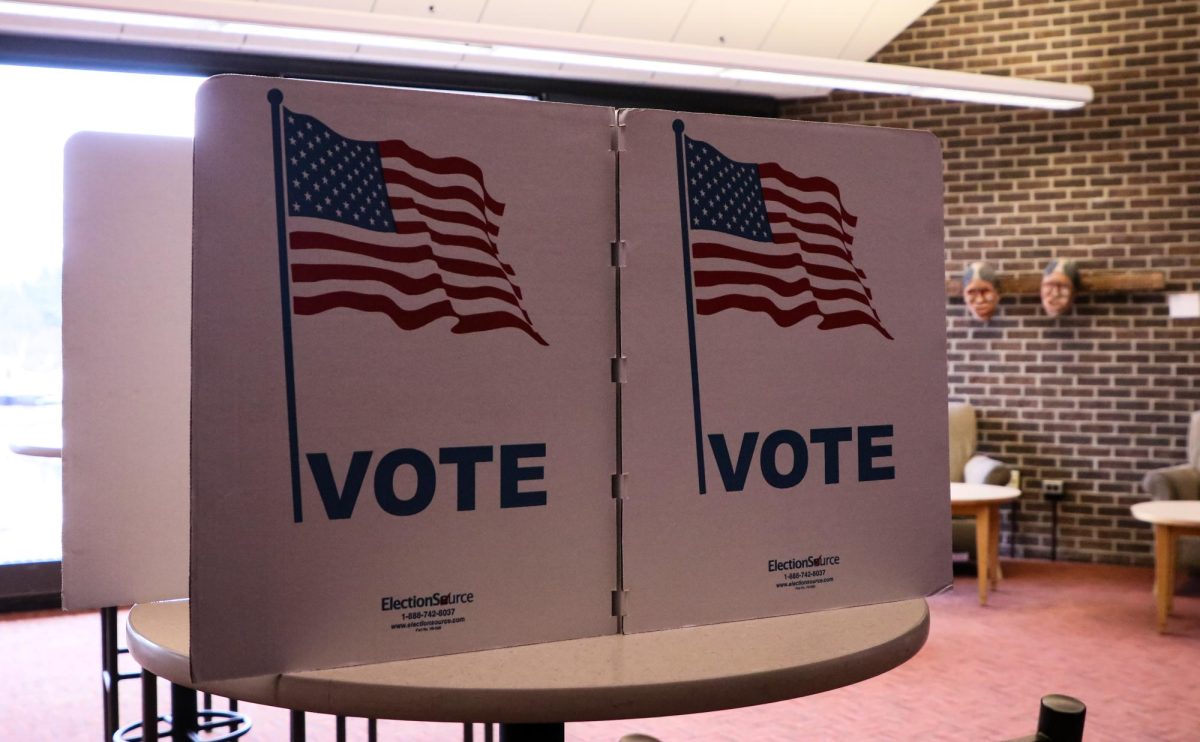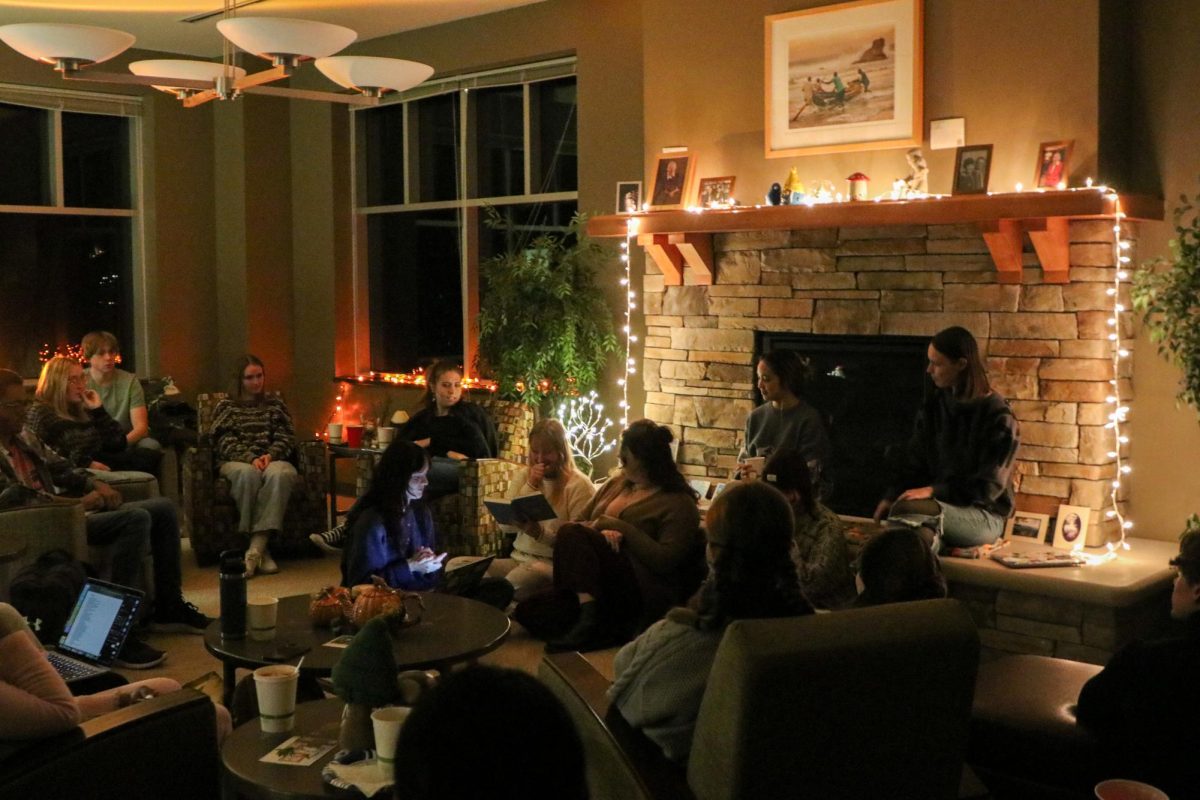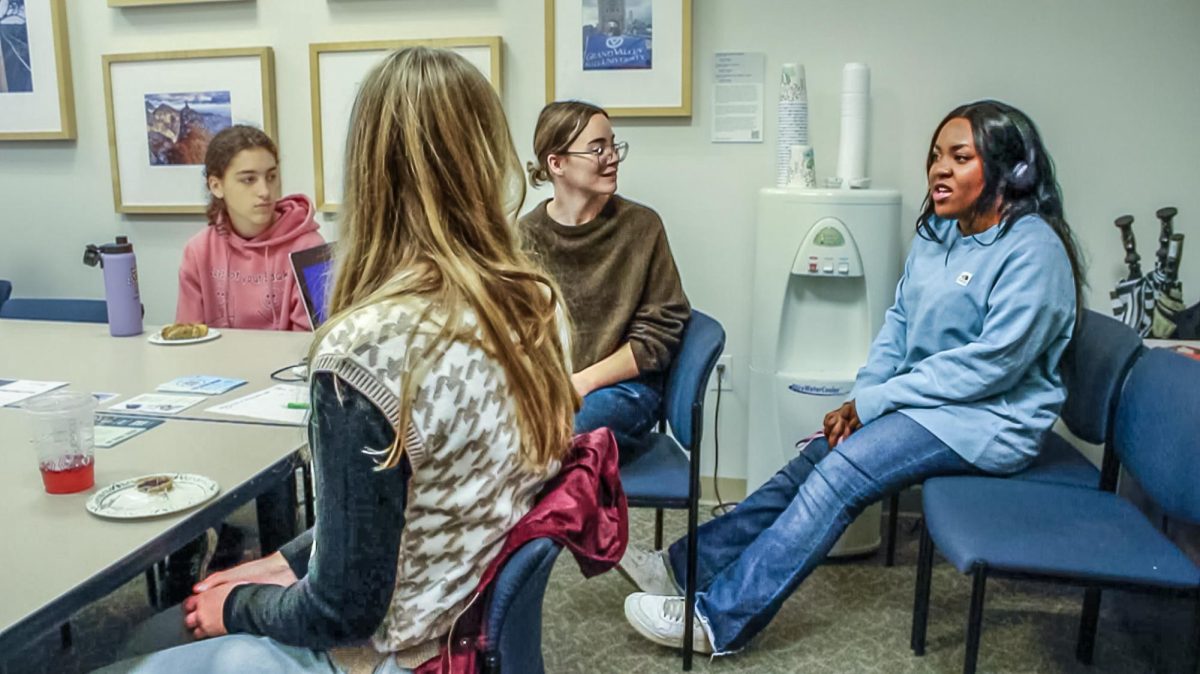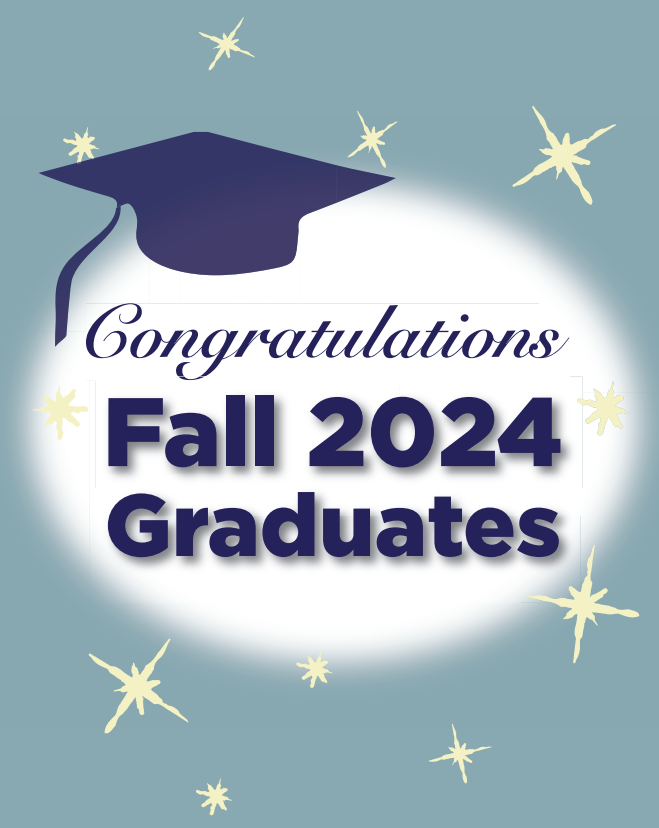Not just for kids
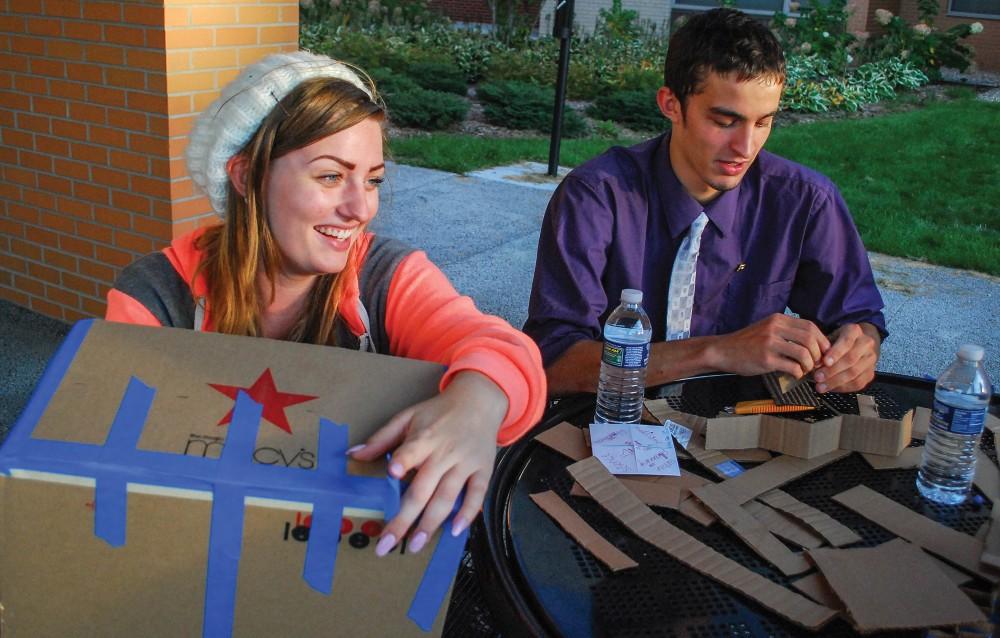
GVL / Hannah Mico GVSU senior Kelsey Dean and junior Lucas Noel work together on building a game out of recycled cardboard for the Global Cardboard Challenge, an event that will be held on Friday by the clock tower.
Oct 2, 2013
Arcade games made out of cardboard created by students at Grand Valley State University will be set up on campus as part of the Global Cardboard Challenge to raise money for the Imagination Foundation on Oct. 4.
“It’s a collaborative effort between Honors, lib studies and movement science,” said John Kilbourne,
professor in the movement science department and the Honors College course “In Search of the
Meaning of Games in Life.”
His class—along with two liberal studies creativity classes taught by his wife, Elizabeth Kilbourne—is
creating cardboard games for the event. Residents of the Movement Science House, located in the
South D apartments on the Allendale Campus, will also be participating.
“Our goal is to help the students tap into their playful side,” John said. “What we love is just how
focused they are. It’s like taking them back to kindergarten and first grade.”
This weekend is a global weekend of play to promote creativity in children, John said. The Kilbournes
were introduced to the idea through the short film “Caine’s Arcade,” created by Nirvan Mullick in April
2012.
Caine Monroy, 9, had set up a small arcade with cardboard games in the front of his dad’s auto parts
store in Boyle Heights, a neighborhood in Los Angeles, where Mullick met him.
The film was posted online and received more than 1 million views the first day, and it led to the
creation of the Imagination Foundation, a nonprofit that aims to “find, foster, and fund creativity and
entrepreneurship in kids around the world,” according to its website.
The first cardboard challenge organized by the foundation took place in the fall of 2012 with more
than 270 events in 41 countries.
“This is the first time we’ve done this, and so hopefully it will just be a celebration of play,” said
Elizabeth, a professor of liberal studies and movement science at GVSU. “It’s about a day for play, but
it’s a fundraiser for the Imagination Foundation.”
Students in the classes were randomly put into groups and had to brainstorm ideas independently
before collaborating.
“This is really fun for the creativity classes because we talk about the process of trying to generate
ideas—divergent thinking—then coming together and analyzing the ideas—convergent thinking and
teamwork—and trying to come up with novel ideas and adapt,” she said. “And it also teaches that
sometimes it doesn’t work and you’ve got to figure out how to make it work—persevere.”
Olivia Sowa, a sophomore studying speech language pathology, is in Elizabeth’s Creativity class.
“I think the fact that what it stands for, as far as the Imagination Foundation, is really good because I
feel like there’s just not a lot of creativity and imagination in the world, especially in younger kids
nowadays,” Sowa said. “So I think by doing this we’re kind of raising awareness. The fact that not just
us, but younger kids, (and) other schools across the nation are doing it, that’s even cooler.”
A lot of cardboard was donated for the event, and Sowa helped bring some of it herself from the
pharmacy she works at in Muskegon.
“I’m a commuter, so I work like every other day in between—every day I don’t have class,” she said.
“So those days I would collect the cardboard and shove it in my car and drive over here, and in
between classes I would just drop it off.”
Levi Bauer, a junior studying cell molecular biology, and Emily Aulerich, a junior in clinical exercise
science, made a cardboard foosball table.
“The project, itself, is actually kind of interesting—just being able to actually build something,” Bauer
said. “I think it’s a really good idea just because I don’t know where else you can kind of have
something like this – when you’re doing something that directly involves play to go and help fund play
and imagination across the world.”
Aulerich said they had to be more resourceful and think outside the box for the project.
“Being in this class kind of makes you realize that kids are not actually play-oriented anymore,” she
said. “It’s all video games (and) media type stuff. It’s all technology, it’s not actual play.”
Sorscha Jarman, a senior in liberal studies, feels like her creativity has increased from the project.
“I don’t think I’ve ever made an arcade game out of cardboard before, so it’s definitely a new
experience,” she said. “It’s kind of a win-win. We get credit, we get to have a blast, (and) other people
get to have a blast to raise money for good causes.”
Daria Siler, a junior studying health communications, said she made a cardboard chair in fifth grade,
but the cardboard arcade project was fun and really different.
“It’s fun because we kind of get to see what everybody else decided to do and just really use our
imaginations to come up with something cool,” Siler said. “It may not be the best game ever, on the
planet, but at least it will be fun.”
The benefits of the cardboard challenge extend beyond the classroom. John says that play and
creativity are vital at every stage of human development and have important implications in adult life.
“I stay pretty tuned in to what employers are looking for,” he said. “I read the business section of The
New York Times, and every week they interview a leading entrepreneur or CEO of a company, and they
always ask the same questions – ‘What are you looking for in new employees?’ And one of the top two
or three things is they want young people who can think creatively. Creativity is something that you
get better at by doing. I think some people might be born with a little more creative DNA, but really
those that are creative work at it.”
The event will take place from 9 a.m. to 11:30 a.m. on Oct. 4 around the Cook Carillon Clock Tower
on GVSU’s Allendale Campus. Similar to what Caine did in Boyle Heights, those choosing to play the
games can purchase two tries for $1, or purchase a “fun pass,” which is unlimited tries, for $2. There
will be small prizes such as stickers, pencils, erasers and buttons that participants can win, and all of
the proceeds will go to the Imagination Foundation.
For more information on the Imagination Foundation, visit www.imagination.is/.




